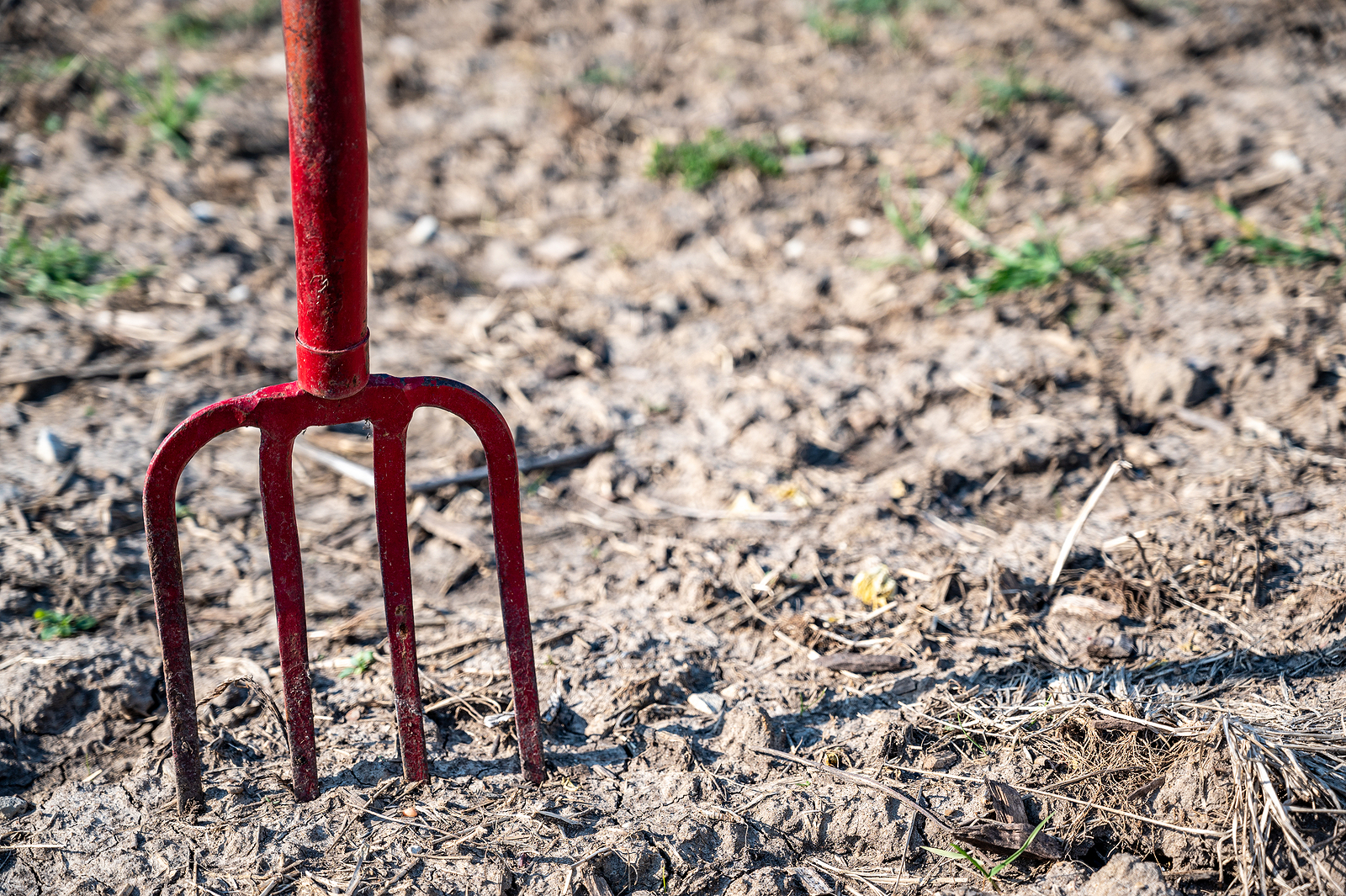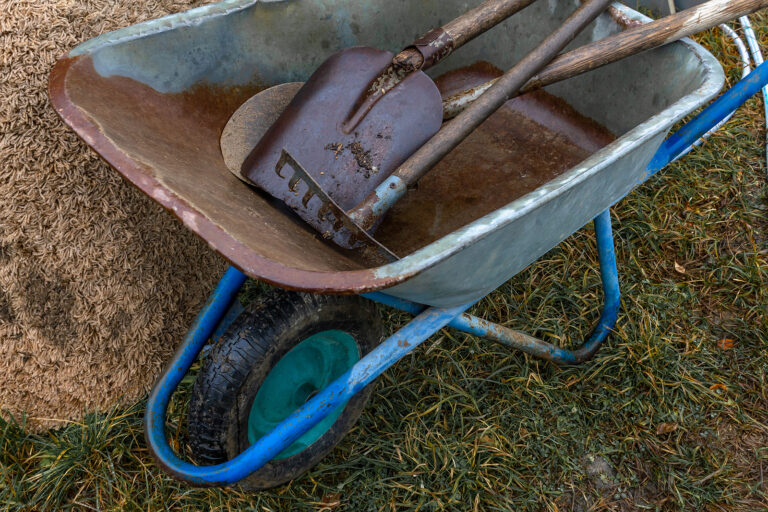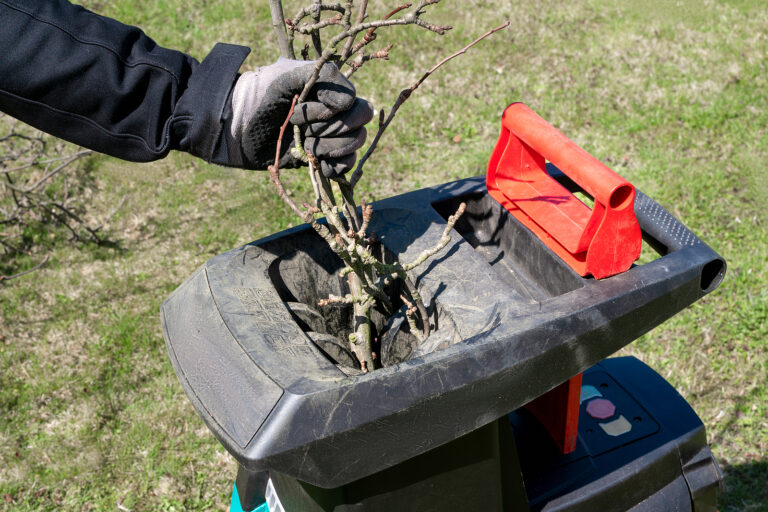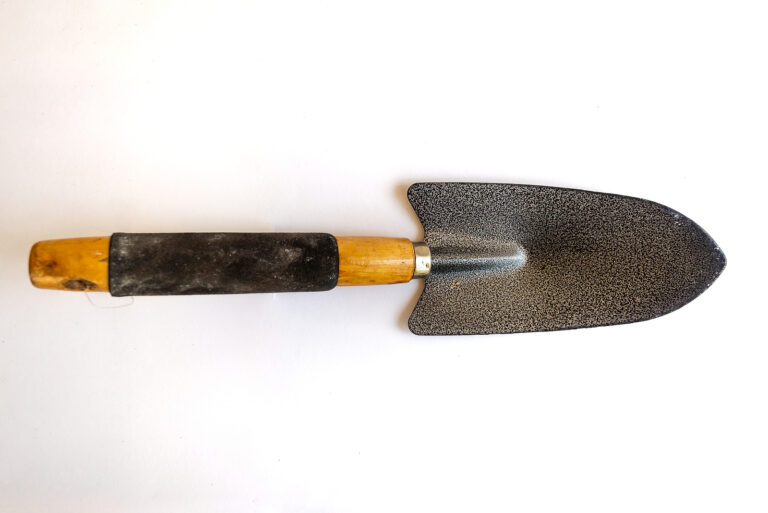Garden Forks Buyer’s Guide
A garden fork is a large steel fork about the size of a shovel with three to ten tines, depending on the type of fork. The shape of the tines depends on the type of fork. Garden forks includes digging and spading forks and also border forks. Garden forks also include pitchforks and manure forks.
Digging forks, spading forks, and border forks are used for breaking, lifting, and turning soil. They have thick, sturdy tines. Pitchforks and manure forks are similar tools, but they have thin tines and are used for moving loose materials such has compost and hay. Pitchforks and manure forks are not designed for digging and turning soil.
A digging or spading is a tool many gardeners use often. Digging and spading forks are designed to loosen up soil, break up clumps, and mix in organic matter. They can also be used for digging out roots and weeds.
There is a slight distinction between a digging fork and a spading fork. A digging fork typically has four sturdy tines, which are often curved, enabling them to penetrate the ground with ease. A spading fork has straight, not curved, tines.
A smaller version of the digging fork is the border fork. The border fork is most suitable for lighter tasks, such as breaking up compacted soil in raised beds or tending to delicate plants in tight spaces. Border forks usually have smaller, narrower tines, making them more maneuverable in confined areas.
Because garden and spaking forks do not have a solid blades like spades or shovels, they weighs less and move less soil.
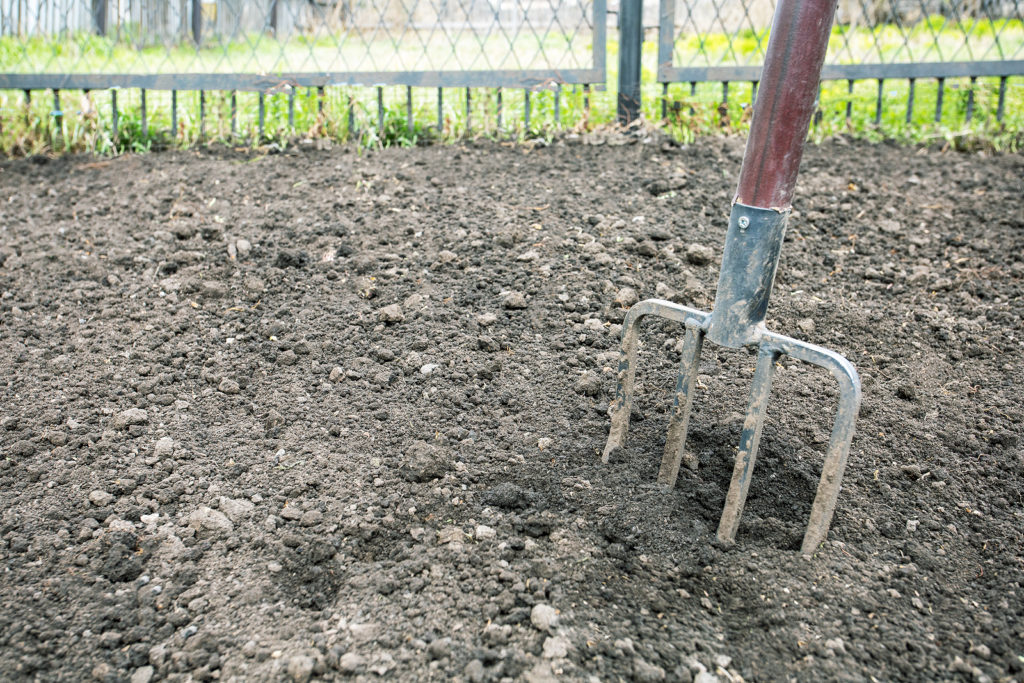
Types of garden forks
Here are the types of garden forks:
Digging fork
This classic design features sturdy tines that are typically made of durable steel. The tines are bent at an angle, allowing for easier penetration into the soil. This type of fork is excellent for breaking up compacted soil and turning over large quantities of earth. Digging forks have a head with four thick rectangular or square heads about 7 to 8 inches wide with rectangular or square tines about 12 inches long. A garden fork handle is about 30 inches long ending in a D-grip. Square tines are oftn called English tines.
Spading fork
Spading forks have straight tines similar to the straight blades of spades. The tines of a spading fork enter the soil more eaily than a spade or shovel blade. A spading fork can be used for initially working heavy soil. The spading fork has four flat tines, sometimes with a diamond or triangular backs. Spading fork handles are usually 42 inches long. Most spading forks have D-handles.
Border fork
The border fork is similar to the traditional digging fork but with shorter and narrower tines. Border forks are ideal for working in tight spaces, such as around shrubs, along borders, or in raised beds. The compact size of the fork enables precise digging while reducing the risk of damaging nearby plants or structures.
Pitchfork
Don’t confuse these pitchforks with digging forks. Pitchforks have thinner, curved tines designed for scooping and pitching lighweight material such as hay or compost. Pitchforks are lighweight tools and suitable only for moving light materials. The pitchfork is also known as a farm fork or hay fork. A pitchfork can have three to five round, tapered tines about 12 inches long, usually with a 4-foot-long, straight handle. Shorter handles with D-grips are aso available. A Scottish composting fork is a lighter and smaller version.
Manure fork
The manure fork is also known as the stable fork. A manure fork commonly has four to ten 12-inch-long, curved, round, fine tines space closely together. A similar model with longer tines is a mulch fork. The term stable fork is usually applied to lighter, almost rakeline models with even more rtines. When there are many tines, this fork is called a beding fork. Handles are usually 4 feet long.
Other forks
Some border forks are marketed as ladies’ forks; these are smaller and lighteer versions (weighing not more than 3 pounds). Another special smaller design with curved tines and long handles are called cultiforks; these are designed for wheelchair gardeners. Smaller hand-sized forks are made and sold as hand forks.
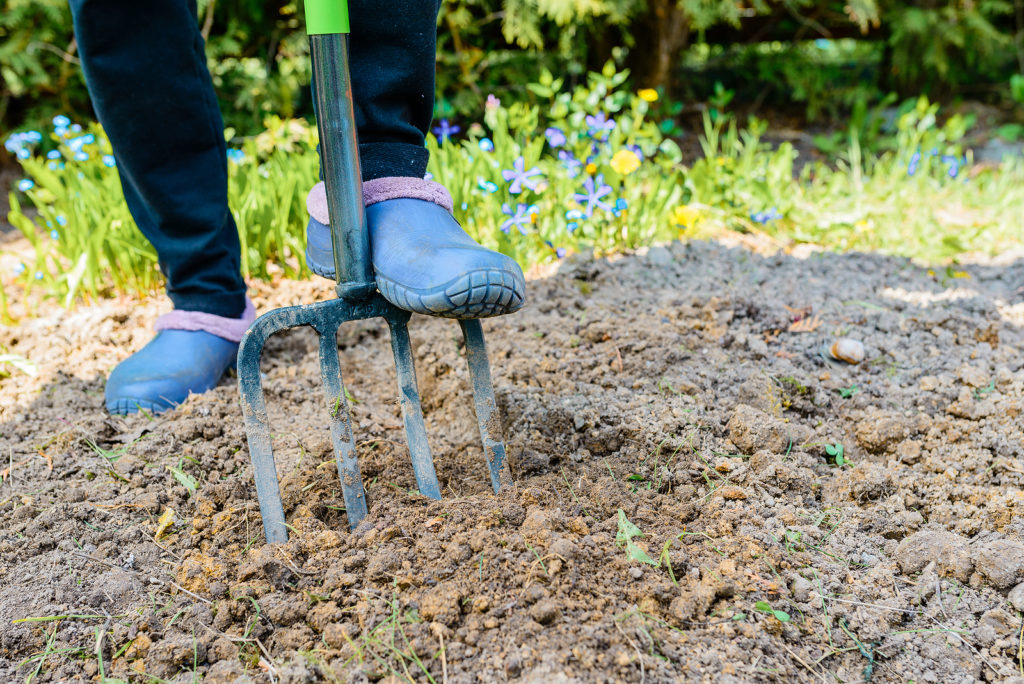
How to use garden forks
The digging and spading forks are ued to turn over garden soil, while the pitchfork and manure fork are used to lift and throw light, loose material such as hay. Digging and spading forks are often easier to use than shovels for turning and cultivating because it is easier to insert the tines into the ground, particularly if the soil is compacted.
- Digging fork: Best suited for turning unbroken soil, breaking up clods, and for heavy cultivation. Use a heavy-duty model for rocky or clayey soils. Push the tines into the soil with your foot, as you would a shovel or spade, then lift and turn the fork to the side.
- Spading fork: Good for turning over already-broken loose soil for cutlitvation. Push the tines into the soil with your foot, as you would a shovel or spade, then lift and turn the fork to the side.
- Border fork: Often used for lighter digging, such as liftig bulbs an perennials, and for harvesting vegetables that frow under the soil surface, such as potoes and beets.
- Pitchfork: Use to lift hay , straw, or leafmold. Essentially for farm or large garden use.
- Manure fork: Good for lifting manure and other fine material without sifting. More suited to farm use tan home garden use.
One of the most common uses for a digging or spading fork is turning over the soil. This is known as aerating the soil, and it helps to improve drainage and air circulation, ensuring that your plants get the nutrients they need to thrive.
When cultivating or turning the soi, the digging or spading fork should be perpendicular to the ground; place your foot on the foort rest then push down and pry up. Use the leverage of the handle to turn the soil over. A digging fork or spading fork can be used to break up compacted soil and create a loose and crumbly texture that is perfect for planting.
A digging fork or spading fork can also be used to remove weeds. Weeds can quickly take over the garden and compete with plants for water, nutrients, and sunlight. Use the fork to loosen the soil around weeds, making them easier to remove. Simply slide the fork tines under the weed and lift it out of the ground. This method is especially effective for tackling deep-rooted perennial weeds that are difficult to remove by hand.
Digging and spading forks can also be used for tasks such as spreading compost or mulch, digging holes for planting, and harvesting root crops.

Garden fork construction
Many manufacturers may lump all of their fork under the cateory for “digging” forks.
Tines
The tines of digging and spading fork tines are commonly made of regular or stainless high carbon steel; the top of the line stainless models are highly polished and the seams of the solid socket are welded (seam welding).
Handle
Most garden forks have handles made of wood or fiberglass. Wooden handles are traditional, providing a comfortable grip and absorbing shocks. Fiberglass handles are popular due to their durability and resistance to weathering. The choice between wood and fiberglass depends on personal preference and the conditions in which you will be using the garden fork. Some forks have lighweight plastic handles that are reinfoced with straps running from the tines to three-quarters or all of the way up the handle.
Handles are usually D-grip or straight. A D-grip handle offers more control for prying and working in close quarters.
Longer handles provide greater leverage, making it easier to penetrate and lift heavy soil, but longer handles can be more challenging to control and maneuver. Shorter handles offer better control and are ideal for detailed work or for individuals with a smaller stature. It is crucial to test out different handle lengths to find the one that feels most comfortable for you.
Garden fork maintenance
- Clean the garden fork after each use.
- Wipe rinse, or shake any dirt or mud off the tines before storage. To prevent rust wipe the tines with linseed.
- Store the garden fork in a dry place.
- Hang the garden fork instead of standing it in a corner with other tools.
- Sand wood handles to keep thm smooth and splinter free. Once a year, wipe the handles with linseed oil to rehydrate and seal the wood.
Garden fork buying tips
A quality fork should have tines that are thick enough to resist bending if you hit a rock or other obstruction. Choose a fork with strong, durable tines and a comfortable handle that allows for a good grip.
A fork made from high-quality materials such as stainless steel or forged carbon steel is your best bet and will provide the necessary strength for tough diggin and prying. These materials are known for their strength and ability to resist rust and corrosion, making them ideal for long-term use. Look for a fork with a solid construction, preferably one piece, to avoid any weak points or potential breakage.
A spading fork may not be as good a buy as a digging fork if you want only one fork. The flat tines on a spading fork may bend if you hit a rock–tines are difficult if not impossible to straighten. The square tines are less likely to bend.
Be sure that the length of the handle is comfortable. It should come up just to your waist when fully inserted in the ground. A non-slip grip is essential for maintaining control and reducing strain on your hands and wrists. A fork with an ergonomically designed handle will help reduce strain on your wrists and shoulders, ensuring a more comfortable working experience.
The tool should have good balance and not be too heavy. Get a fork that is not too heavy for you to use. If you have a large garden or plan on using the tool for extended periods, it’s advisable to choose a lightweight but sturdy option. This will reduce fatigue and make the task more manageable. If you have a smaller garden or don’t mind a heavier tool, a larger fork with extra strength may be beneficial for tougher soil conditions.
Shopping list
- Digging fork
- Pitchfork
- Manure fork
More Buyer’s Guides

